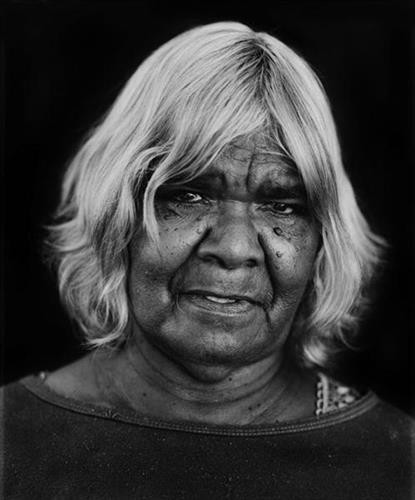111580819447
All the rockhole in Putijarra country and the camping ground
“There’s a spring there, on top of the hill. It’s a waterfall. If you sing out for Kajarra, he’ll know. He’ll hear his name and let the water fall down. He gotta have somebody to call for him, otherwise there’ll be no water.
That’s my father’s place, all the family come from there, from Kajarra and Birriliburru. They walked from there to Jigalong, past the Rabbit Proof Fence.”
– Miriam Atkins
This painting portrays physical elements of Martu Country, such as the dominant tali (sandhills), warta (trees, vegetation), and water sources. Rock holes, waterholes, soaks and springs were all extremely important sites for Martu people during the pujiman (nomadic bush) era, with many important jukurrpa (dreamtime stories) chronicling the creation of these landmarks. In the past the Martu lived nomadically, moving from water source to water source, and hunting and gathering bush tucker as they went. They would traverse very large distances annually, visiting specific areas in the dry and wet season depending on the availability of water. As they travelled and hunted they would also burn areas of country creating a larger diversity of plant and animal life.




